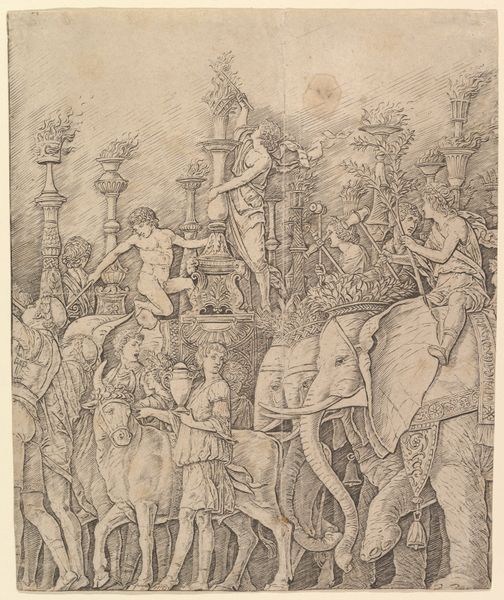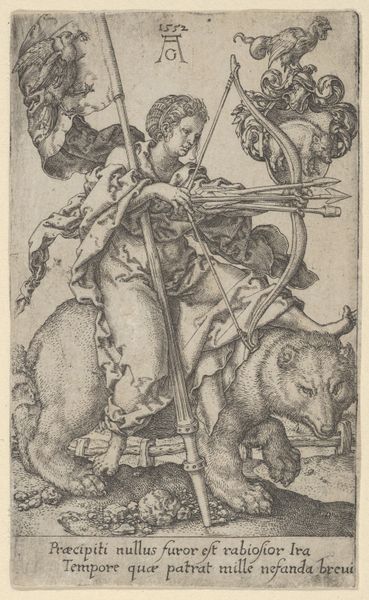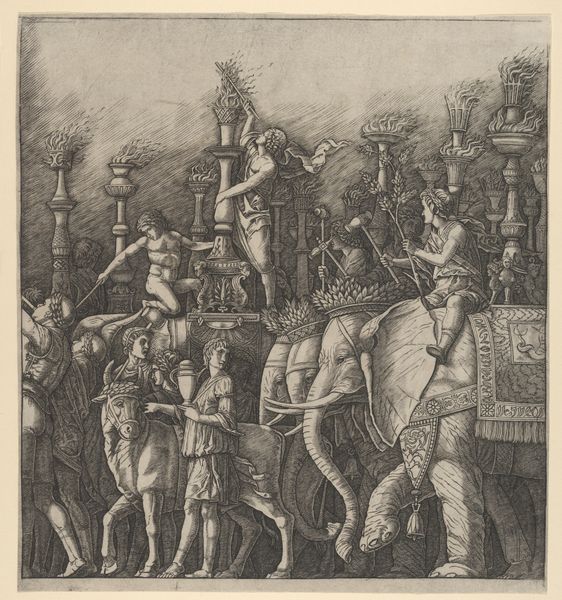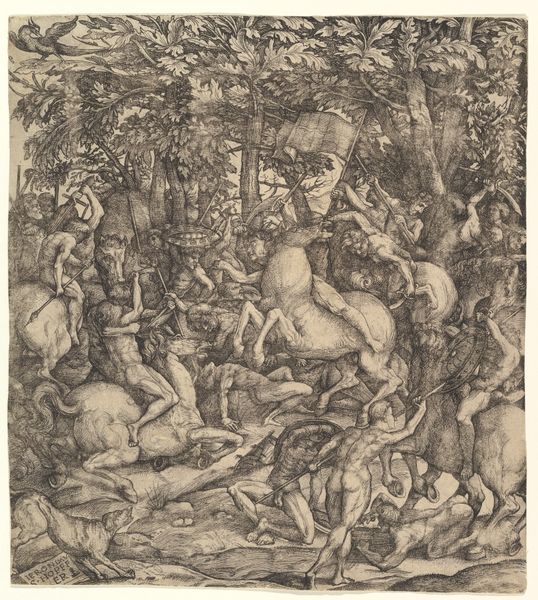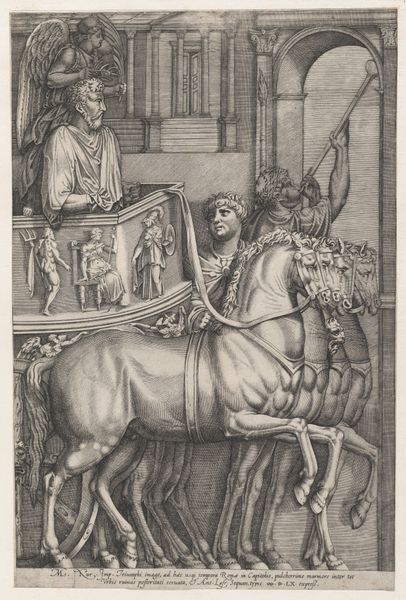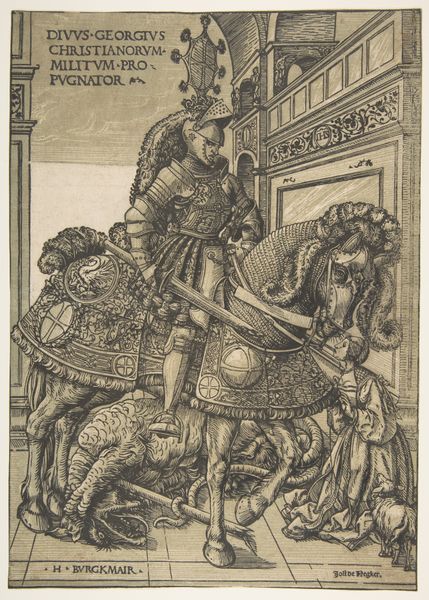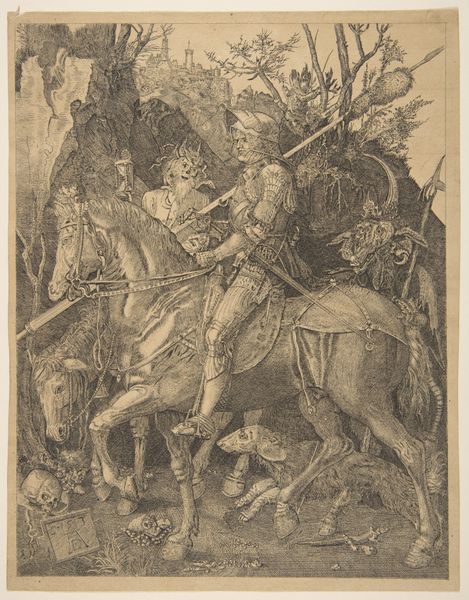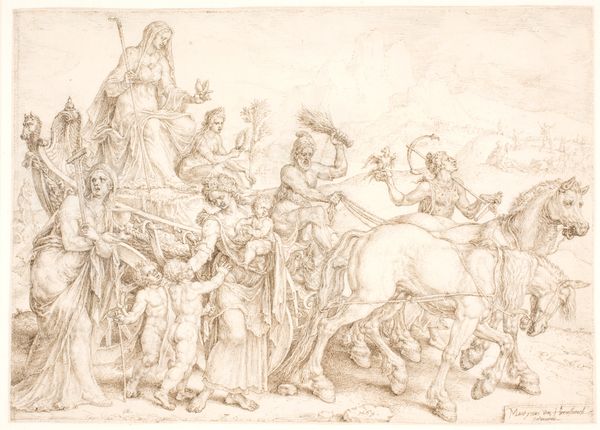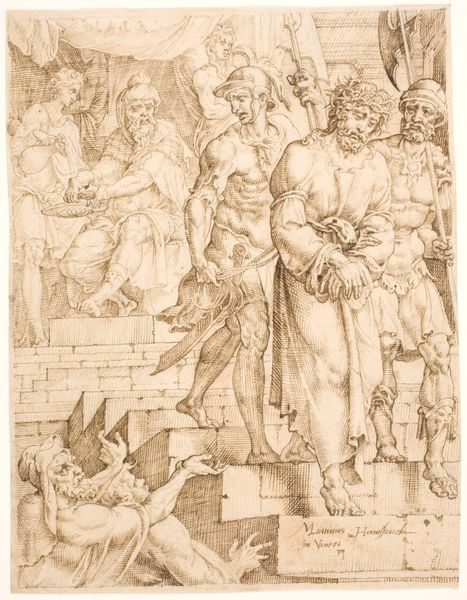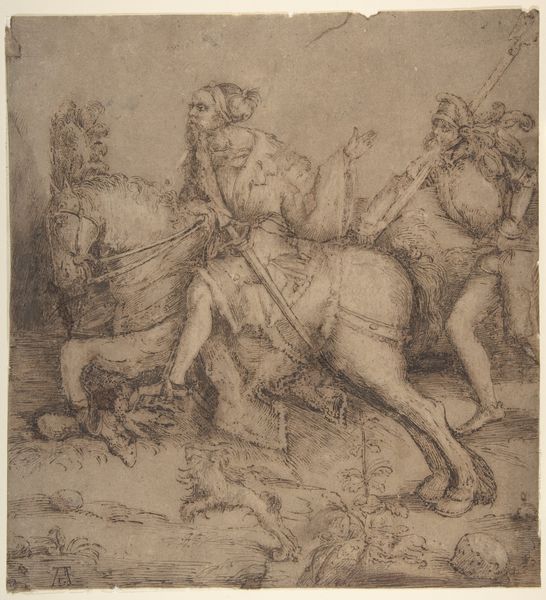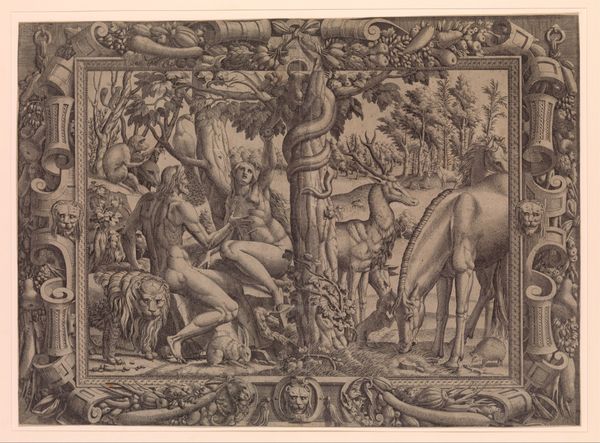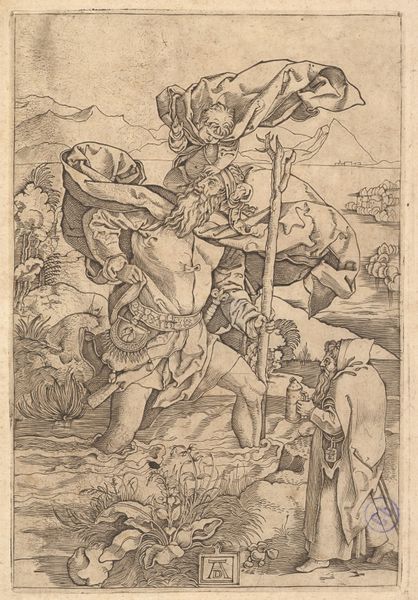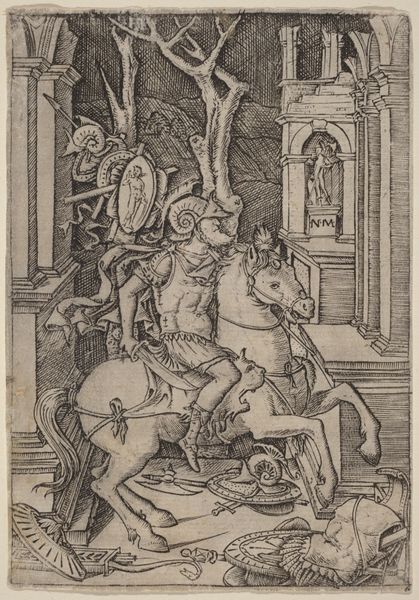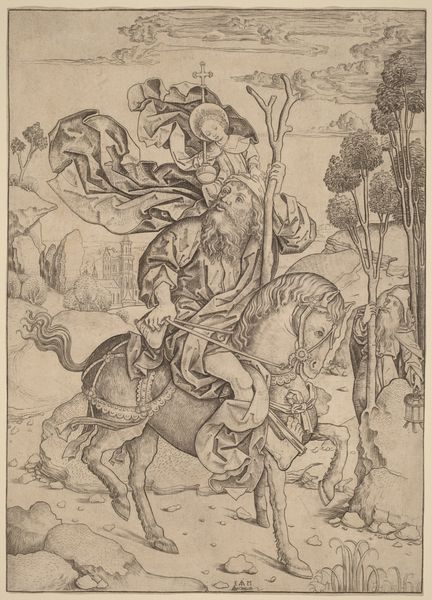
print, engraving
#
ink drawing
#
narrative-art
# print
#
figuration
#
history-painting
#
italian-renaissance
#
engraving
Dimensions: 267 mm (height) x 194 mm (width) (bladmaal)
Curator: Here we have “Elefanter baerende fakler,” which translates to "Elephants Bearing Torches." Created between 1470 and 1500, this engraving is part of the collection at the SMK, the National Gallery of Denmark. Editor: What a trip! I mean, look at this scene—elephants decked out like they're heading to some Renaissance rave. There’s this fantastical, almost fever-dream quality. Curator: Indeed. This print offers a window into the Italian Renaissance’s fascination with classical antiquity. The procession, with its classically draped figures and exotic animals, evokes triumphal entries of Roman emperors. Note the meticulous details of the costumes and the ornate candelabras. Editor: But it’s not just copying the classics, right? There's a playful invention to it all. The elephants feel less like real animals and more like props in a grand theatre production. Also the contrast with ink and white in the engraving gives it such stark feel to it. Curator: Precisely. The artist, who remains anonymous, seems to be inventing a classical pastiche. Think about how the torches transform the animals into mobile beacons—there’s a ceremonial, symbolic function at play here. Engravings such as this served to circulate imagery and ideas throughout Europe. Editor: It’s fascinating how it manages to feel both incredibly detailed and kind of ghostly, all at the same time. What does the parade of burning things makes one feel? Maybe a desire for drama in art? Curator: The Italian Renaissance valued both beauty and knowledge. This print blends those ideals into something striking, demonstrating an artist experimenting with the imagery available during his time to create something exciting. Editor: Thinking about all that detail painstakingly etched into the plate— it makes you realize how much labour, time, and effort went into these prints that circulated across Europe, setting imaginations alight. Curator: And still, centuries later, sparking conversation. That is why it's worth standing in front of a work like this.
Comments
No comments
Be the first to comment and join the conversation on the ultimate creative platform.
